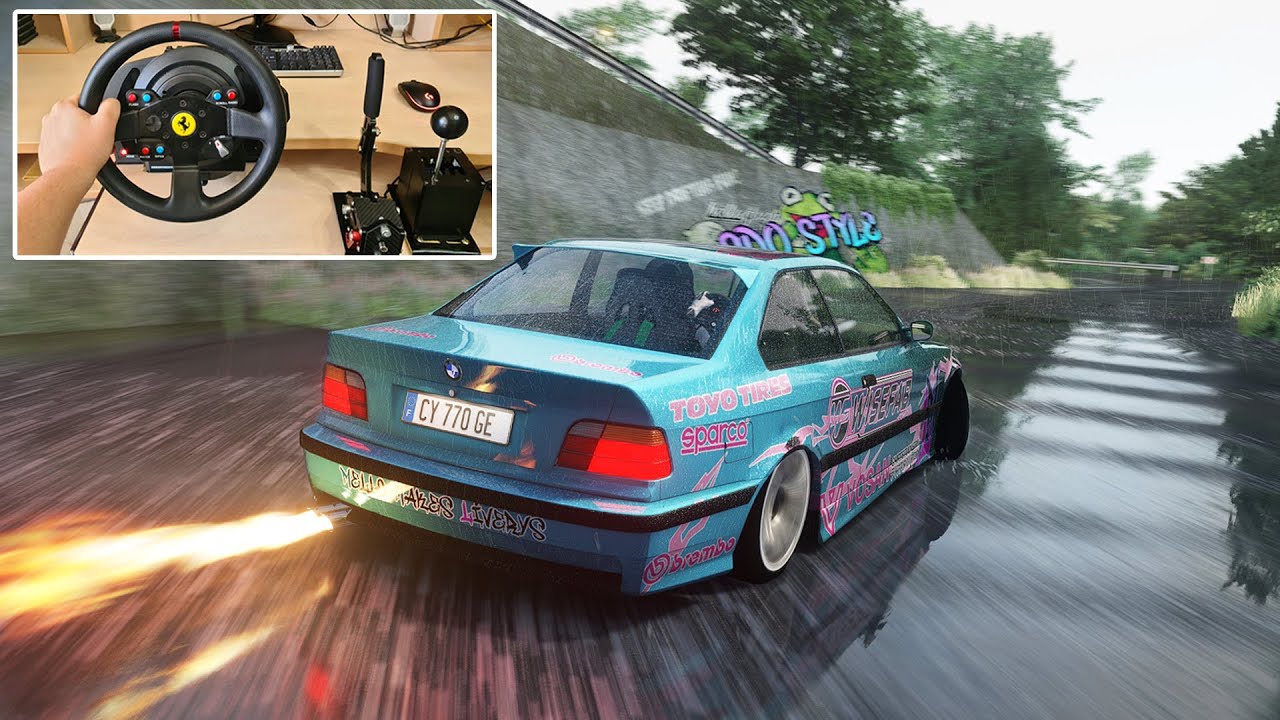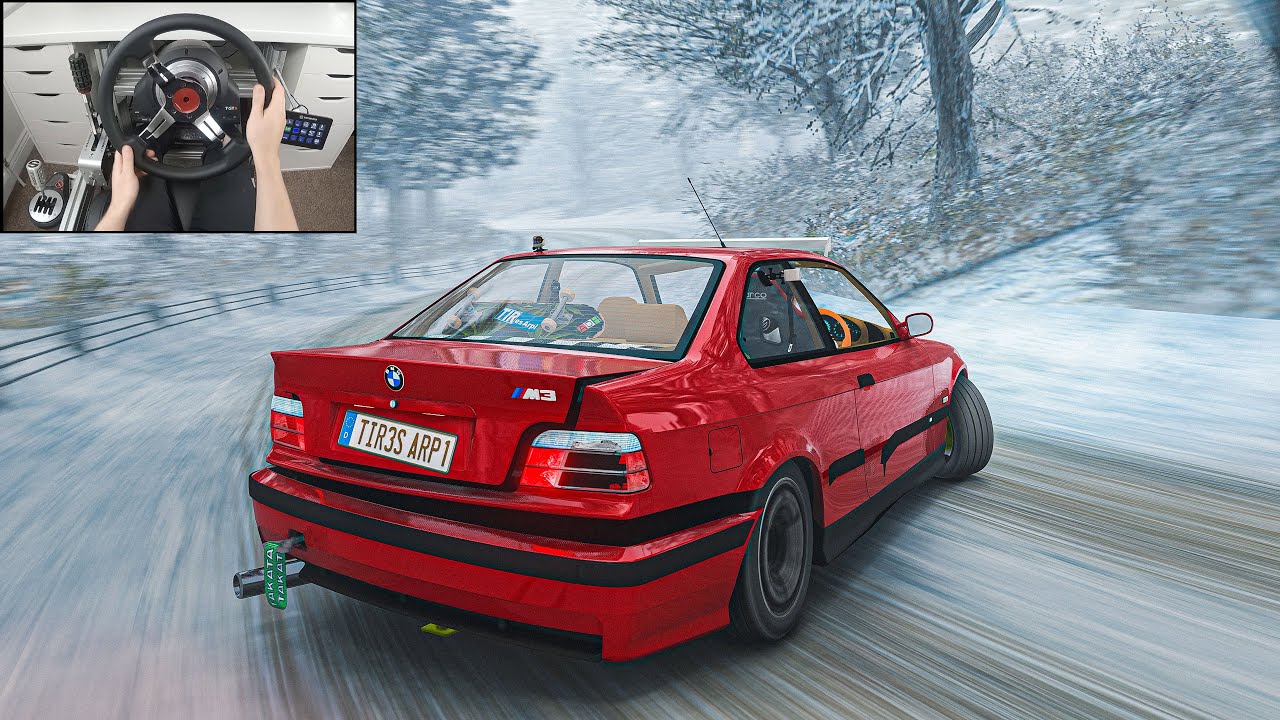Let's explore the intersection of automotive engineering, virtual simulation, and the thrill of motorsport, specifically focusing on the BMW E36 drift experience within the Assetto Corsa simulation. This topic presents a unique opportunity to engage students with concepts ranging from physics and mechanics to digital modeling and game development. It’s a chance to bridge the gap between theoretical knowledge and practical application.
We'll break down the key elements. Consider practical examples of how to incorporate this into your curriculum. Let's address common misconceptions and ways to keep students excited and motivated.
Understanding the BMW E36
The BMW E36 is a popular car model. It was produced during the 1990s. This generation of the 3 Series is celebrated for its balanced handling, relatively lightweight construction, and readily available aftermarket parts. These characteristics make it a favorite for drifting enthusiasts. The car's mechanical simplicity, compared to modern vehicles, makes it easier to understand and modify, both in the real world and in a virtual setting.
Explain to students the significance of rear-wheel drive (RWD). Highlight the role of a limited-slip differential (LSD). Discuss how these components are essential for initiating and maintaining a drift. This can be a good lead into conversations about vehicle dynamics and engineering design choices.
Assetto Corsa: A Realistic Simulation Platform
Assetto Corsa is a racing simulation video game. It is known for its highly realistic physics engine and detailed vehicle models. The game aims to replicate the handling characteristics of real-world cars. This allows players to experience the nuances of driving different vehicles in various conditions. This fidelity makes it an ideal platform for learning about vehicle dynamics and driving techniques.
Emphasize that Assetto Corsa isn’t just an arcade game. It relies on complex calculations to simulate the behavior of tires, suspension, and aerodynamics. Compare it to other racing games, pointing out the differences in realism and the learning opportunities each provides. This can spark interesting discussions about the role of simulation in engineering and design.
The Art of Drifting: Physics in Motion
Drifting is a driving technique. The driver intentionally oversteers, causing the rear wheels to lose traction while maintaining control of the vehicle. This requires a delicate balance of throttle control, steering input, and weight transfer. Mastering the art of drifting involves understanding and manipulating the physics of vehicle dynamics.
Explain the concept of slip angle. Discuss the relationship between tire grip and lateral force. Use diagrams to illustrate how weight transfer affects the car's balance. Encourage students to experiment with different techniques in Assetto Corsa and observe the results. Emphasize the importance of practice and experimentation in learning complex skills.
Bringing it to the Classroom: Engaging Activities
There are several ways to incorporate this topic into your teaching. You can use Assetto Corsa as a virtual laboratory for exploring vehicle dynamics. Assign students the task of tuning a BMW E36 for drifting, experimenting with different suspension settings and tire pressures. Have them document their findings and explain the reasoning behind their choices. This activity combines hands-on learning with critical thinking.
You can also use real-world examples to illustrate the concepts. Show videos of professional drifters and analyze their techniques. Discuss the engineering challenges involved in designing cars for drifting. Invite guest speakers from the automotive industry to share their experiences. These activities can help students connect the theoretical knowledge to real-world applications.
Consider creating a virtual drift competition within the classroom. Students can compete against each other using Assetto Corsa. This promotes teamwork, problem-solving, and healthy competition. The competition can also be used as an opportunity to assess students' understanding of the concepts.
Addressing Common Misconceptions
Many people believe drifting is simply about reckless driving. It is often perceived as dangerous and irresponsible. Emphasize that controlled drifting, as practiced in motorsport, requires skill, precision, and a deep understanding of vehicle dynamics. It’s not just about losing control; it’s about managing and exploiting that loss of control.
Another misconception is that all cars can drift. Explain that certain characteristics, such as rear-wheel drive and a powerful engine, are essential for drifting. Discuss the limitations of front-wheel drive cars and the challenges of drifting all-wheel drive cars. This clarifies the specific requirements for successful drifting.
Some may think that simulation games perfectly replicate reality. Highlight the limitations of current simulation technology. Discuss the factors that cannot be accurately modeled, such as driver fatigue and environmental conditions. Emphasize that Assetto Corsa is a valuable tool for learning, but it’s not a perfect substitute for real-world experience.
Tips for Educators
Start with the basics. Ensure students have a solid understanding of fundamental physics concepts, such as force, motion, and friction. Use relatable examples to illustrate these concepts. This provides a strong foundation for understanding vehicle dynamics.
Break down complex topics into smaller, manageable chunks. Avoid overwhelming students with technical jargon. Use visual aids, such as diagrams and videos, to explain concepts. This enhances understanding and retention.
Encourage active learning. Give students opportunities to experiment, explore, and discuss their findings. Create a supportive learning environment where students feel comfortable asking questions and making mistakes. This fosters curiosity and critical thinking.
Emphasize the interdisciplinary nature of the topic. Connect vehicle dynamics to other fields, such as engineering, physics, and computer science. This broadens students' perspectives and helps them appreciate the relevance of the concepts.
Conclusion
The BMW E36 drift experience within Assetto Corsa offers a compelling way to engage students with complex concepts. By combining automotive engineering, virtual simulation, and the thrill of motorsport, you can create a stimulating learning environment. This topic bridges the gap between theory and practice. This will ultimately enhance student understanding and ignite their passion for STEM fields. Incorporate these tips and suggestions to make learning fun and effective.


